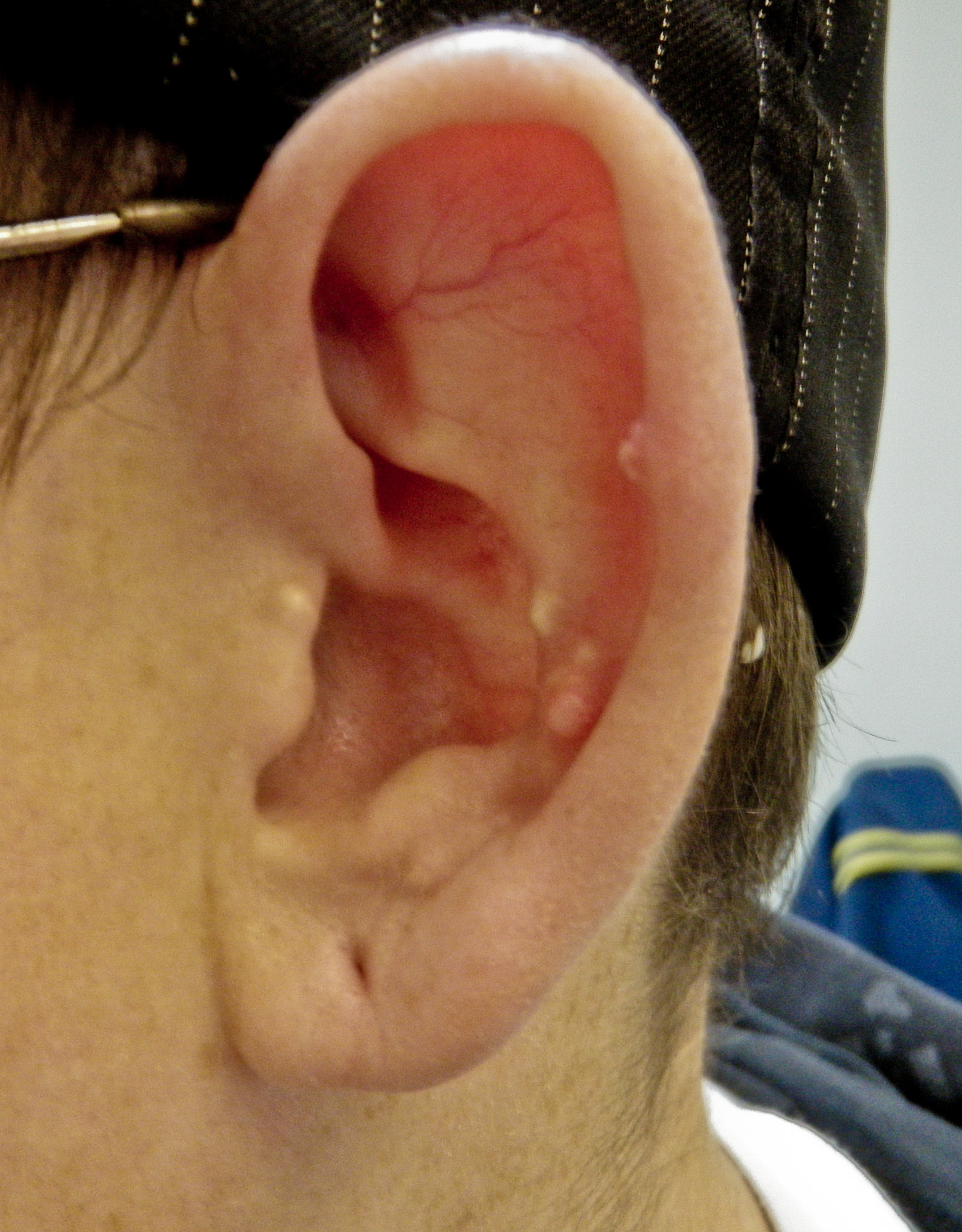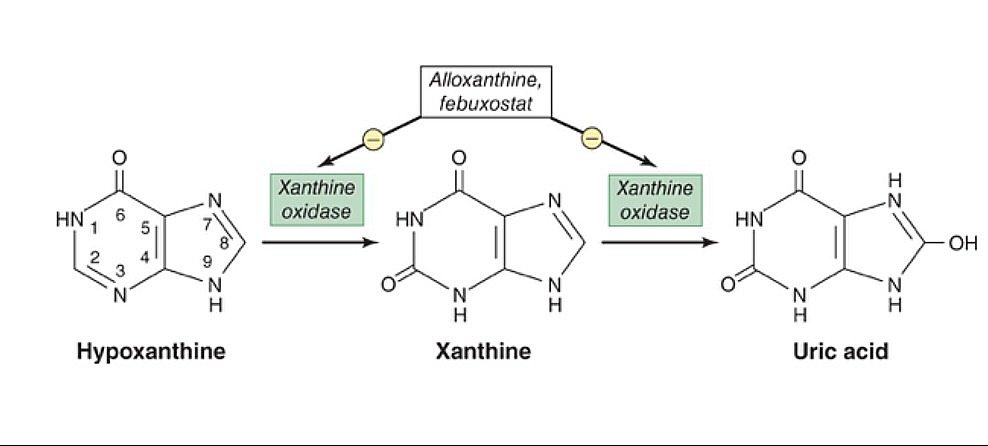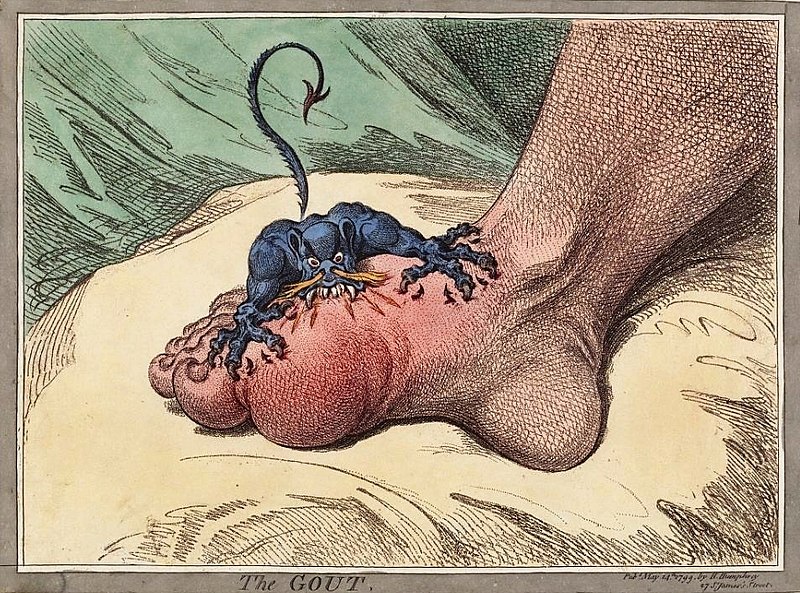Playlist
Show Playlist
Hide Playlist
Rheuma Case: 51-year-old Man with R Knee and L Ankle Pain
-
Slides Gout.pdf
-
Reference List Rheumatology.pdf
-
Download Lecture Overview
00:02 Okay, today we're gonna talk about gout and pseudogout. 00:06 Fist off, let's do a case. 00:08 A 51-year old man presents to your office with 5 days of right knee and left ankle pain. 00:14 His past medical history is notable for HIV with undetectable viral load, hypertension, CKD stage III, obesity and gout. 00:24 He was also recently hospitalized for a MRSA cellulitis about 2 weeks ago. 00:29 He denies any recent hiking or gardening and his medications include chlorthalidone, gabapentin and he is also on on some antiretroviral medication for his HIV. 00:40 Initial vitals, a little bit of a temperature 37.8 C, heart rate's 87, blood pressure is okay. 00:48 On exam, he has a hot, swollen right knee and a warm, left, swollen ankle. 00:54 Skin exam is normal. 00:56 His creatinine is 1.6 with a baseline of 1.5, indicative of his stage III kidney disease and his white count's a little elevated at 10.4 Uric acid 7.8 So let's use those 4 important features to try and characterize or draw out some of the important features of the case. 01:13 So, time course, sounds like it's subacute. 01:16 It's been going on for about 5 days. 01:18 Next up, the pattern of joint involvement, well, it's his right knee and his left ankle. 01:23 So, it's asymmetric and since it involves 2 to 4 joints, we would use the term oligoarticular. 01:30 Thirdly, looks like with a hot, swollen knee, the very definition of inflammation, we do have evidence of joint inflammation. 01:38 And lastly, is there systemic involvement? Unclear. 01:42 Temperature of 37.8 maybe suggest low-grade fever but hard to say at this time. 01:48 We'll have to get some blood work. 01:50 Blood work there, at least initially, again, a mild white count but not much else going on. 01:56 So, let's look at our differential diagnoses. 01:59 So the things at this point, in favor of gout is the fact that, hey! he's got a history of gout. 02:04 Uric acid level of 7.8 is important. 02:08 Keep in mind that a uric acid level should be less than 7 and the supersaturation point for uric acid is around 7. 02:16 But many patients can have an elevated uric acid level without any evidence of gout. 02:20 So that's something to keep in mind. 02:22 His recent hospitalization as we'll see later is also relevant. 02:26 In favor of pseudogout, it involves the knee. 02:29 He does have a history of hypertension, we'll talk about that later. 02:32 And the things that are in favor of septic joint, he's immunocompromised with his HIV status even if his CD-4 count is okay. 02:40 He did just have a MRSA cellulitis so we're worried about bacteremia and seeding a joint and thus have a low grade temperature. 02:47 And lastly, in favor of Lyme is the fact that he had an oligoarticular arthritis with a low grade temperature, that's pretty classic presentation for Lyme. 02:56 So at the moment, we kinda have all 4 of these items is on our differential diagosis.
About the Lecture
The lecture Rheuma Case: 51-year-old Man with R Knee and L Ankle Pain by Stephen Holt, MD, MS is from the course Non-Autoimmune Arthritis.
Included Quiz Questions
Which of the following is NOT considered a risk factor for gout?
- Recent weight loss
- High-protein diet
- Recent hospitalization
- Diuretic intake
- Alcohol intake
Pseudogout most commonly involves which of the following joints?
- Knee
- Ankle
- Shoulder
- Hip
- First metacarpophalangeal joint
Customer reviews
5,0 of 5 stars
| 5 Stars |
|
5 |
| 4 Stars |
|
0 |
| 3 Stars |
|
0 |
| 2 Stars |
|
0 |
| 1 Star |
|
0 |






